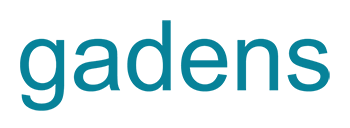New AML/CTF obligations for real estate businesses from 1 July 2026 – It’s time to start getting ready
From 1 July 2026, Australian real estate agents and property developers that sell property directly to customers without an agent will be subject to numerous anti-money laundering/counter-terrorism financing (AML/CTF) obligations as new ‘Tranche 2’ reporting entities under the Anti-Money Laundering and Counter-Terrorism Financing Act 2006, following legislative reform passed in late 2024 (Reforms).
The Reforms highlight real estate as a significant money laundering channel in Australia. Criminals buy real estate as a way of laundering or concealing illicit funds, as it allows for the movement a large amount of funds in a single transaction. Laundering illicit funds through the real estate sector not only allows criminals to conceal and enjoy the profits from their crimes, but also poses a risk that property prices may be artificially inflated creating hardship for genuine property buyers seeking affordable housing.
While AML/CTF obligations may appear complex, requiring significant work over the coming months, in practice, they can be navigated with effective preparation and well-designed policies, procedures and controls. Early engagement and proactive preparation by the business is crucial to this process.
We set out below an overview of the core obligations to help real estate businesses who will become new reporting entities understand and start preparing for the Reforms now. This is notwithstanding that several specific requirements are still to be finalised in replacement AML/CTF Rules and AUSTRAC guidance due to be published in October 2025.
Will I be subject to the AML/CTF regime?
An entity will be a ‘reporting entity’, and therefore subject to the AML/CTF regime, if any of its Australian business activities fall within one or more prescribed categories of ‘designated services’.
Under the Reforms, the following two new categories of designated services relating to real estate transactions will be captured, meaning that businesses that provide these services will be reporting entities once the Reforms commence:
| Designated Service | Observations |
|---|---|
| Brokering the sale, purchase, or transfer of real estate on behalf of a buyer, seller, transferee or other transferor in the course of carrying on a business | • Most real estate agents that broker real estate transactions, whether or not funds are exchanged, will be captured • Customer will be both seller/transferor AND buyer/transferee |
| Selling or transferring real estate in the course of carrying on a business selling real estate, where the sale or transfer is not brokered by an independent real estate agent | • Property developers and other businesses that sell property directly to customers without an independent real estate agent (ie with their own in-house real estate agents, sales or marketing employees) will be captured, for example, direct sales of: - house and land packages - apartments off the plan; and - blocks of vacant land in new sub-divisions • Customer is buyer or transferee |
Both of these designated services centre on what constitutes “real estate” and therefore:
- Capture transactions involving:
- typical residential and commercial property;
- leasehold interests of more than 30 years;
- land use entitlements, ie entitlements to occupy land conferred indirectly through ownership of shares in a company or units in a unit trust; and
- certain interests, estates, rights or entitlements in land in a foreign country.
- Don’t capture transactions involving:
- residential tenancy agreements;
- property management;
- leasing of property (with terms of less than 30 years, excluding options for further terms); or
- auctioneer services (unless alongside the brokering of the sale).
These designated services require the provider to be “carrying on a business”. As such, incidental sales of real estate by a business and private sales of residential property by a seller are not intended to be captured.
Where there are multiple members of a business group (ie related entities in a corporate group) that provide designated services, a ‘lead entity’ will need to be appointed to be responsible for assessing risk across the business group and at the level of each member, and developing an enterprise-wide AML/CTF Program. The AML/CTF Rules (yet to be finalised) will specify how the lead entity is to be identified.
Relevantly for property developer groups, this will generally alleviate the need for each reporting entity in a business group (ie special purpose vehicles established to complete discrete ‘build/develop to sell’ projects) to have their own AML/CTF Program.
For joint venture (JV) property development projects, the JV landholder entity may not be controlled by any individual JV participant, and therefore will not be automatically a member of any of their respective business groups for AML/CTF purposes. However, an election will be able to be made for the JV landholder entity to join a JV participant’s group for reporting purposes.
What will my AML/CTF obligations be?
The AML/CTF regime is fundamentally concerned with reporting entities that provide designated services identifying transactions that raise money laundering (ML) or terrorism financing (TF) suspicion, and reporting details of those transactions to AUSTRAC. AUSTRAC and global law enforcement agencies can then use this information to trace, stop and prosecute money launderers, terrorists and other criminals.
To that end, reporting entities are required to first assess the inherent ML/TF risks associated with their designated services and customers, and then mitigate these ML/TF risks by developing, maintaining and implementing tailored internal policies and processes within the business.
These key AML/CTF obligations include:
- Preparing an ML/TF Risk Assessment, which identifies inherent ML/TF risks associated with their designated services and customers, and assigns risk ratings to customers and services that meet certain characteristics identified by the business;
- Designing and adopting AML/CTF Policies which set out the entity or reporting group’s processes and procedures for satisfying its AML/CTF obligations and mitigating the ML/TF risks identified in the ML/TF Risk Assessment (which together with the AML/CTF Policies constitutes an ‘AML/CTF Program’);
- Enrolling with AUSTRAC as a reporting entity or reporting group from 31 March 2026 but no later than 1 July 2026;
- Conducting initial customer due diligence, including collecting and verifying prescribed ‘know your customer’ or ‘KYC’ information and documentation from customers;
- Conducting ongoing and enhanced customer due diligence to monitor for any suspicious transactions, and obtaining additional information for high risk customers;
- Conducting due diligence on personnel (ie employees and contractors) to identify any potential sources of internal ML/TF risk;
- Conducting regular personnel ML/TF risk awareness training to ensure that personnel remain aware of the business’ AML/CTF obligations, and any changes in ML/TF risk or processes;
- Reporting certain information to AUSTRAC, including:
- ‘suspicious matter reports’, when the business identifies any transactions that raise reasonable suspicion of ML/TF activity;
- annual compliance reports;
- Ongoing review and engagement with AML/CTF obligations, including:
- continuous reviews of AML/CTF policies;
- actively monitoring and implementing AUSTRAC guidance and feedback; and
- triannual independent evaluations of AML/CTF policies; and
- Maintaining records, including of customer identification procedures, transactions and AML/CTF Programs.
What must I do to prepare?
While the Reforms do not come in for new Trance 2 reporting entities until 1 July 2026, the new AML/CTF Rules and AUSTRAC Guidance containing specific requirements will not be finalised and published until October 2025, and AUSTRAC’s ‘starter program’ for reporting entities with low ML/TF risk will not be available until December 2025, reporting entities can still start now to proactively engage and prepare to meet their AML/CTF obligations so they have sufficient runway to ensure they are fully compliant by 1 July 2026.
Steps new Tranche 2 reporting entities can take now to stay ahead of the curve include:
- preparing their ML/TF Risk Assessment, either internally or by engaging an external qualified risk consultant;
- identifying senior management personnel to take carriage of AML/CTF compliance, including board and staff training to raise awareness of the business’ imminent AML/CTF obligations;
- developing draft AML/CTF Policies, including customer due diligence procedures, which can be finalised once the new AML/CTF Rules, AUSTRAC Guidance and ‘starter program’ are published; and
- preparing the business to implement the new AML/CTF Policies before obligations commence on 1 July 2026.
What next?
Gadens’ Financial Services Regulatory team has AML/CTF experts who are well placed to help new and existing reporting entities to start preparing for the Reforms. We can provide advice on whether you will be caught by the Reforms, uplift existing or prepare new AML/CTF Policies, provide AML/CTF awareness training, conduct independent evaluations and provide ongoing support and compliance advice. We also work with leading ML/TF risk specialists who can prepare ML/TF Risk Assessments, which then determine the procedures and controls to include in your AML/CTF Policies.
If you found this insight article useful and you would like to subscribe to Gadens’ updates, click here.
Authored by:
Caroline Ord, Partner
Patrick Simon, Senior Associate
Phillip Danh, Graduate

